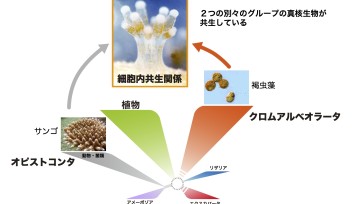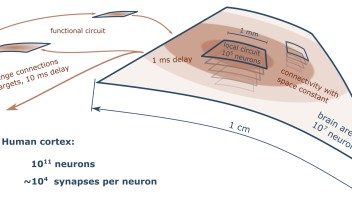Effect of isoflurane on cortico-cortical synapses in genetically modified mice

The experiment used genetically modified mice that had a light sensitive protein, usually found in the eye, embedded in the membrane of the presynaptic neurons in one area of the brain (purple circle). Flashes of blue light activated the protein and stimulated the transmission of sequences, or ‘trains’, of action potentials along the presynaptic neurons to another area of the brain (yellow area) at two different frequencies – twice per second (0.2Hz) and twice every ten seconds (2Hz). The larger reduction by isoflurane on higher frequency transmission was recorded by a silicon probe inserted into the brain.
The experiment used genetically modified mice that had a light sensitive protein (green circle), usually found in the eye, embedded in the membrane of the presynaptic neurons in one area of the brain. Flashes of blue light activated the protein and stimulated the transmission of sequences, or ‘trains’, of action potentials along the presynaptic neurons to another area of the brain at two different frequencies – twice per second (0.2Hz) and twice every ten seconds (2Hz). The larger reduction by isoflurane on higher frequency transmission was recorded by a silicon probe inserted into the brain.
Copyright OIST (Okinawa Institute of Science and Technology Graduate University, 沖縄科学技術大学院大学). Creative Commons Attribution 4.0 International License (CC BY 4.0).
Tags














